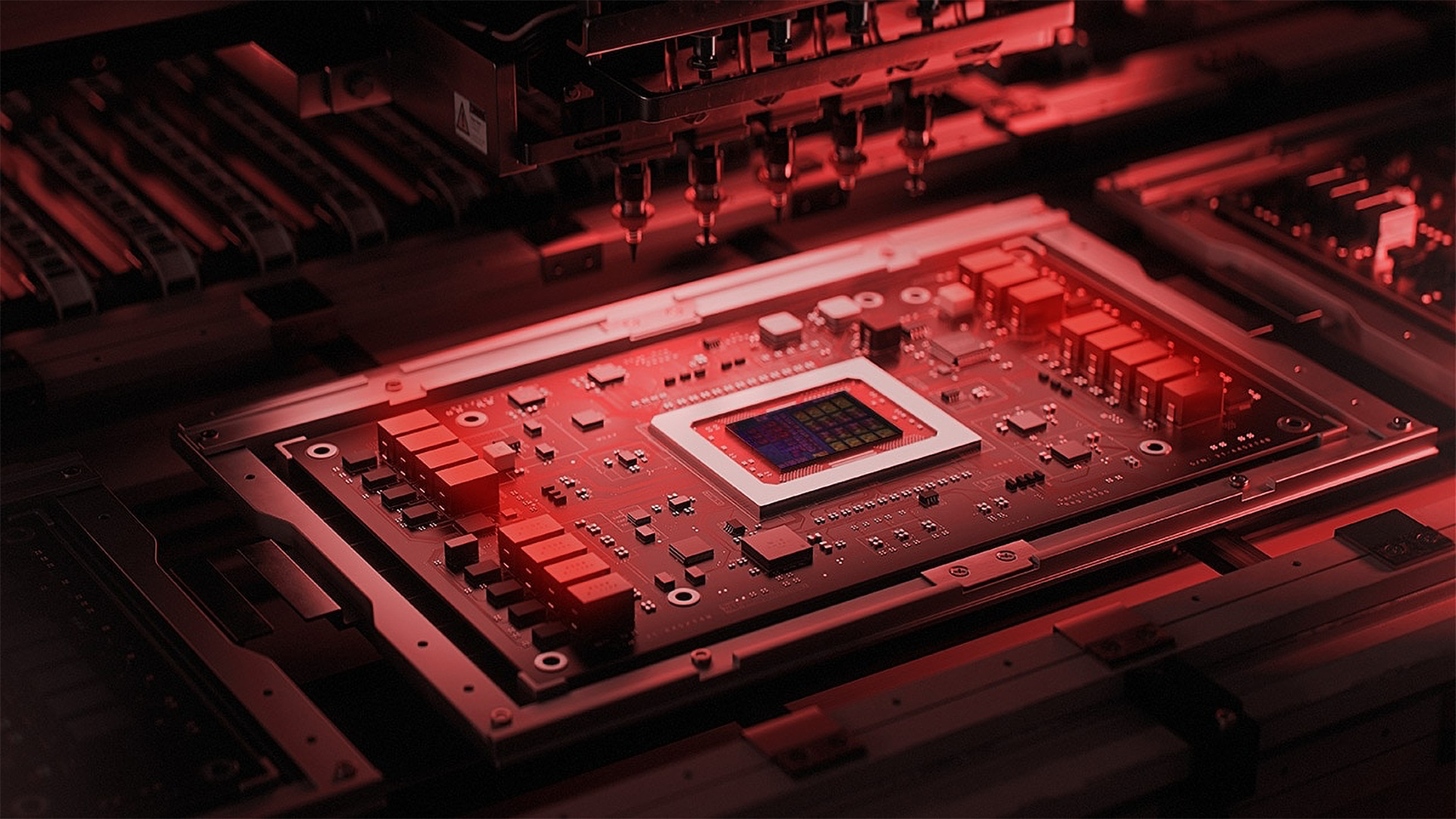Linux gamers won't be affected by RX 5000/6000 series driver shift — AMD changes limited to Windows thanks to separated development

AMD confused the gaming community greatly after it announced it would put RDNA 1 and RDNA 2 driver support in "maintenance mode", but later corrected that the two architectures would still be receiving game optimizations regardless. Apparently, this confusion also led some people to believe game optimizations would also stop on AMD's Linux drivers as well. Luckily, Phoronix has published an article reaffirming that Linux support has not changed with this announcement, primarily because Linux AMD drivers are developed separately from their Windows counterparts.
Linux driver support is maintained very differently on AMD GPU drivers compared to AMD's GPU drivers for Windows. Linux driver support for AMD GPUs typically dwarfs what AMD supports officially in Windows. Kernel driver support reportedly dates back all the way to AMD's GCN 1.2 architecture, which includes GPUs such as the R9 390X and R9 Fury X.
Helping matters is that AMD GPU driver support in Linux is heavily reliant on open-source drivers. Up until September this year, the AMDVLK driver was the official open-source Linux driver from AMD and was maintained by AMD directly. Community contributions are also implemented to help improve the driver's functionality.
There is also the exclusively community-driven RADV driver that was started before AMD got into the Linux game with its own AMDVLK driver. Being exclusively community-driven, RADV is maintained completely independently of AMD and is currently the de facto GPU driver for all Radeon GPUs for Linux. RADV is a very robust and well-built driver solution that is supported by many of the industry's tech giants, including Valve, Google, and Red Hat.
This is why, starting on September 15th, 2025, AMD has opted to discontinue the AMDVLK driver altogether. Support for RADV has grown so much in strength that there is no need to have both AMDVLK and RADV co-existing. Performance on RADV also outshines AMDVLK in many situations. Instead, AMD is backing RADV fully and shifting all of its GPU driver development and maintenance to the RADV driver.
All of this is to say that Linux gamers can rest assured that any nasty driver support changes AMD makes on the Windows side won't immediately be copied on the Linux side. Even if AMD wanted to start cutting support on the Linux side, it can't anymore because it has discontinued its own official AMDVLK driver. Pulling the same stunt on RADV would be impossible because too many other companies and individuals are maintaining the driver. (In other words, if AMD stops development for certain GPUs, another company or individual would inevitably take over.)

Follow Tom's Hardware on Google News, or add us as a preferred source, to get our latest news, analysis, & reviews in your feeds.
Get Tom's Hardware's best news and in-depth reviews, straight to your inbox.

Aaron Klotz is a contributing writer for Tom’s Hardware, covering news related to computer hardware such as CPUs, and graphics cards.
-
-Fran- This is getting an awful lot of attention.Reply
I wish back when nVidia burned GPUs with driver updates they would've had this much coverage.
Regards. -
Amdlova Reply
Nvidia pays well-Fran- said:This is getting an awful lot of attention.
I wish back when nVidia burned GPUs with driver updates they would've had this much coverage.
Regards. -
LordVile Reply
Because normally Nvidia don’t try to do it in less than 5 years from the launch of a product. Pascal has just been sunset after what 9 years? 8 for the Ti models-Fran- said:This is getting an awful lot of attention.
I wish back when nVidia burned GPUs with driver updates they would've had this much coverage.
Regards. -
ezst036 Reply
Nvidia did hold on to support for GPUs longer than AMD's latest recent announcement(on the Windows side) but even moreso in this instance it's AMD vs AMD.-Fran- said:This is getting an awful lot of attention.
I wish back when nVidia burned GPUs with driver updates they would've had this much coverage.
Regards.
Having open source drivers means AMD does/will have the longest actively-supported GPUs on the planet meanwhile their Windows are potentially the shortest. -
-Fran- Reply
True. They try to burn your GPU as soon as possible, so you get a new one. Good point!LordVile said:Because normally Nvidia don’t try to do it in less than 5 years from the launch of a product. Pascal has just been sunset after what 9 years? 8 for the Ti models
Since, as a reminder, the 12VHighFailure connector is working as intended, right?
I think the interesting bit is what nVidia does not say to me. Are Turing cards actually receiving game performance improvements or just bug fixes and they're just not disclosing their internal classification for them? From many years, nVidia doesn't say much about anything they do. Remember the paid actors in forums hyping and posing as normal people? Pepperidge Farm remembers.ezst036 said:Nvidia did hold on to support for GPUs longer than AMD's latest recent announcement(on the Windows side) but even moreso in this instance it's AMD vs AMD.
Having open source drivers means AMD does/will have the longest actively-supported GPUs on the planet meanwhile their Windows are potentially the shortest.
The open source point is a good one though. AMD on Linux does not "die", pretty much.
Regards. -
LordVile Reply
12VHP is a bad connector but that’s not really the point?-Fran- said:True. They try to burn your GPU as soon as possible, so you get a new one. Good point!
Since, as a reminder, the 12VHighFailure connector is working as intended, right?
They seem to be-Fran- said:
I think the interesting bit is what nVidia does not say to me. Are Turing cards actually receiving game performance improvements or just bug fixes and they're just not disclosing their internal classification for them? From many years, nVidia doesn't say much about anything they do. Remember the paid actors in forums hyping and posing as normal people? Pepperidge Farm remembers.
The open source point is a good one though. AMD on Linux does not "die", pretty much.
Regards. -
Notton I don't want to sound like a conspiracy theorist, but...Reply
Nvidia botched drivers news cycle ended rather rapidly, whilst AMD drivers are still in the news cycle after some people got duped by fake news.
Nvidia drivers still aren't fixed.
Nvidia drivers don't work with OpenGL properly and constantly crashes games that run on it. This has been going on for over a year now. -
BFG-9000 On the very same month Fermi would be released, nVidia released 196.75 which disabled the fans to cause the then-current big Tesla models (GTX 8800, 9800, 275/280/285/295) to burn upReply
576.02 similarly disabled fan control but only after waking from sleep, after which the temperature sensors no longer updated (NvAPI_GPU_GetThermalSettings), leading to a couple reportedly burned RTX 5090 cards from fans remaining at idle. On the bright side, not that many people tried them due to all the issues with drivers newer than 572 or 566, depending on the game. Perhaps that's why it didn't make the news here on Tom's, especially as it mostly just caused crashing problems from the overheating
I mean if the drivers are crashing all of the time anyway, the only thing most people might notice is 576.02 would seem even less stable than usual. While modern hardware is protected so should just shut off if core temperatures really got dangerous, nVidia has a bad habit of leaving little margin in their reference designs, so some VRM component could give up instead if you are unlucky
Open source support depends on how popular it is. For example while R300-R500 recently got new driver updates in Mesa-24 and Mesa-25.3, the unloved old R200 drivers got spun-off into Mesa-amber